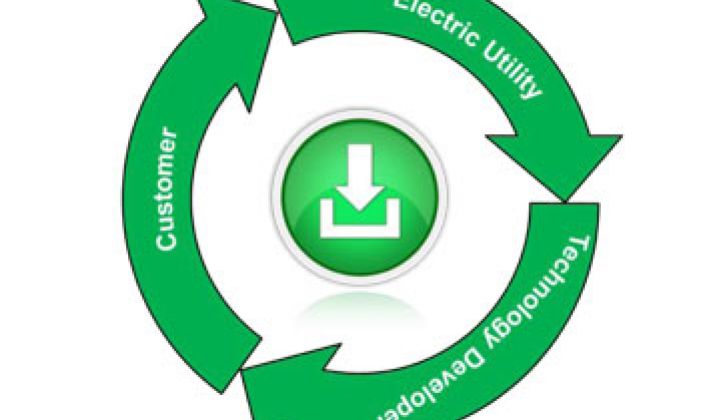Just over a year ago, Aneesh Chopra, the Chief Technology Officer for the U.S. at the time, challenged the utility industry to develop a green button for consumers to access their own electricity data, much as the healthcare industry had done with bluebuttondata.org.
He also noted that his office was "extraordinarily concerned about cybersecurity in the grid."
Thirteen months later there haven’t been any major strides made in the domain of grid cybersecurity; in fact, there have only been more public breaches. However, there has been plenty of enthusiasm for Green Button, which is a far easier endeavor than implementing comprehensive cybersecurity for the electrical grid.
The Green Button initiative allows commercial and residential customers to download their electric utility data in a standardized format that can then be shared with third parties who can offer energy-saving services. If you really want to geek out, you can dig into the data yourself.
The movement has garnered the support of dozens of smart grid and energy management companies, along with utilities that serve nearly 30 million customers. California has led the way, which is often the case with smart grid initiatives. But there’s much more that needs to be done.
“The technical problem has been addressed,” said Lisa Wood, director of the IEE, an institute of the Edison Foundation focused on innovation, electricity and efficiency. “Now we’re at the point [where] it’s being put to use.”
There is still one more step in the technical process for Green Button, however. Green Button Connect, the next installment, will allow customers to share their data with third parties (ESCOs, cool energy apps) directly, instead of downloading it and then uploading it to the third party. Aclara, one of the early supporters of Green Button, has already enthusiastically supported the next step to “Connect My Data.”
The technical problems are the easy ones, however. The real challenge is getting people to use it, although companies continue to announce their support (BuildingIQ was one of the most recent additions).
One of the issues is that many of the utilities that have committed have not actually activated Green Button access. Of 33 utilities committed, seven have implemented. Security concerns are another hurdle. California has outlined rules for sharing customer data, but there is not a federal framework for safe data access.
Neither of those issues has stopped startups from building apps to help customers -- mostly residential, but some commercial -- save energy or at least understand usage better. There have been various hackathons and apps contests, and the White House recently hosted an “Energy Datapalooza."
But go out on to the street and ask people about Green Button, and you’ll mostly get blank stares.
“When I first started this [study], I was looking for examples where a customer would find the app and there’d be a benefit story,” said Adam Cooper, research manager at IEE. “We didn’t quite see a go-to place for these apps.”
Most of the apps gain visibility through partnerships with larger organizations. WattzOn, for example, says it has about 400,000 people who have logged on. The company has been around since 2009, however, far before Green Button came into existence, and has partnerships with military housing contractor Balfour Beatty, the city of San Jose and other business partners.
Cooper would like to see the federal government take the initiative to put all of the apps that leverage Green Button data into one place, like an apps store for energy. He noted that some of the largest California utilities are already interested in such a format and are discussing it with the California Public Utility Commission.
One of the problems is that if utilities support an apps store, then the apps would need to be vetted. “They don’t just want to white-list them,” said Cooper. “Customer feedback [channels] need to be developed.”
The concern is not just about ensuring that companies are securing the private data, but also determining whether the app is useful and worthwhile.
As utilities and regulators (probably in California first) figure out ways to bring the Green Button data to the masses, the first uptake will continue to be with commercial customers.
Retroficiency was one company that the IEE pointed out as an example as an organization that had improved operational efficiency by using the Green Button data. Unlike the average residential customer, businesses are already focused on their energy bills, and having an easier way for companies, or their energy management services, to access the data just hastens the course of action.
Going into 2013, there will likely be even more utilities, and a slew of additional companies, that support the Green Button format. The pace at which they move from support to implementation, however, is yet to be seen. But don’t hold your breath for the time when millions of homeowners start clicking on the Green Button just yet.
“The uptake will first be with commercial,” said Wood. “The potential is there to do something.”



